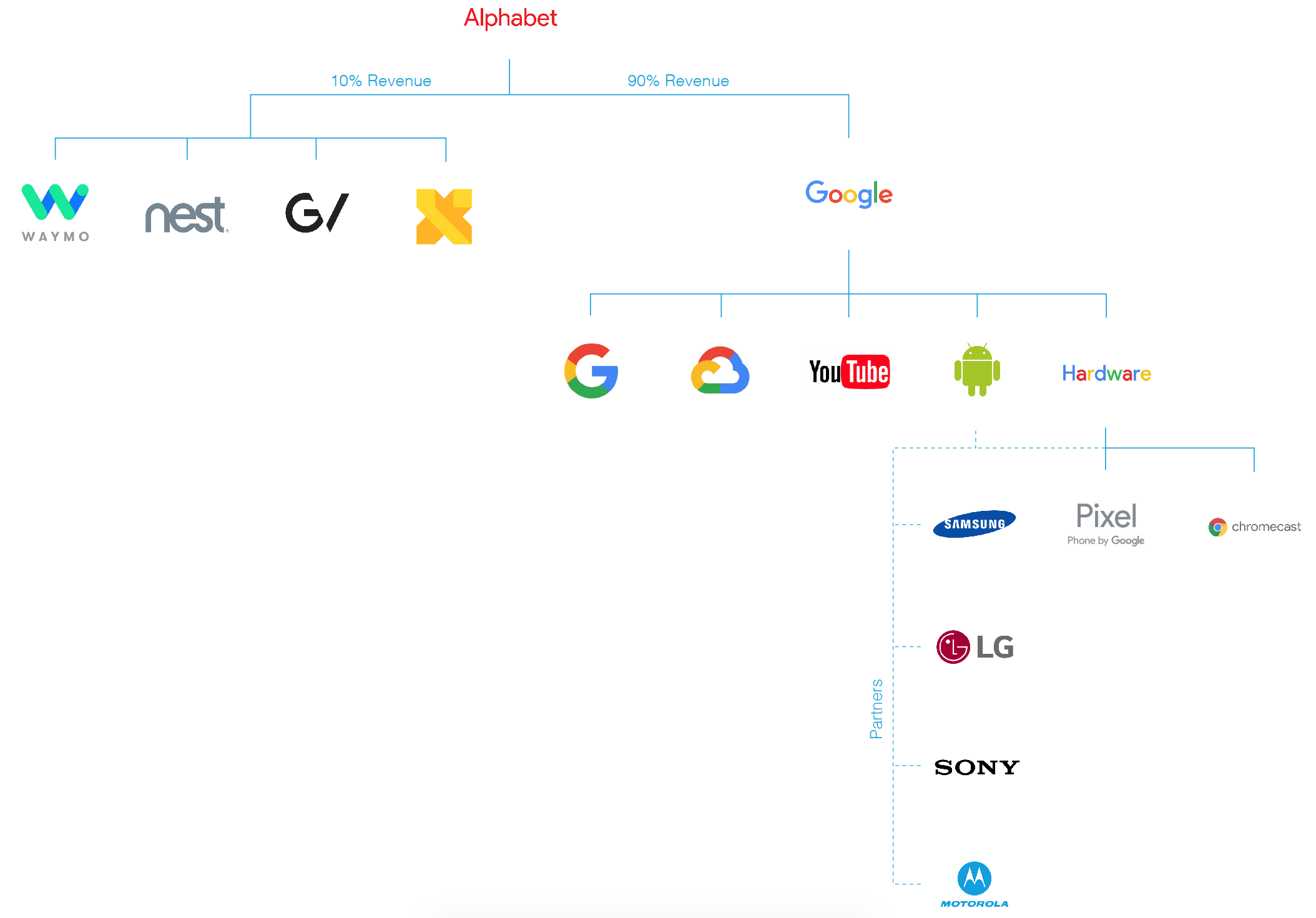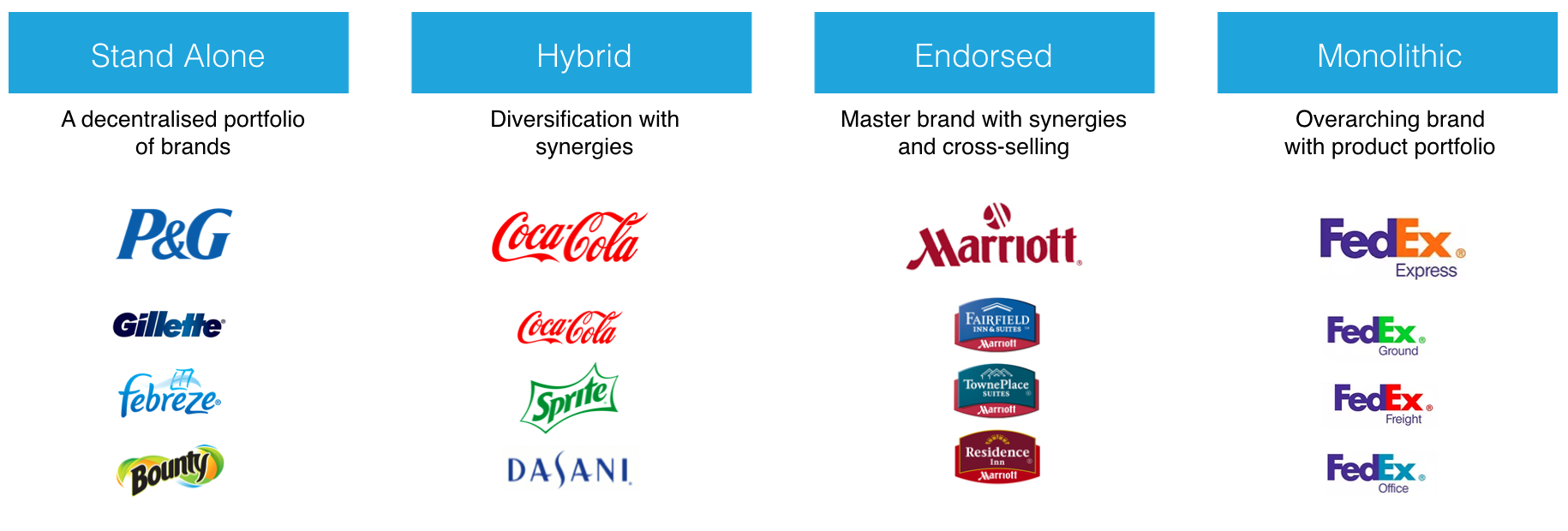Building a Brand Architecture
Brand architecture is the strategic task of defining the relationships between brands within a single company.
Brand architecture is a constantly evolving strategy, defined by business needs, leadership vision, market dynamics and financial success. Brand architecture is not about fixing what’s broken, but realising the future and how to build towards it. There are a lot of examples of brand architecture models, but use them as examples, not solutions.
Examples of brand architecture
Nike build their brands based on audience interests
Nike, who own converse, Hurley, Umbro and Cole Haan, keep them as independent brands so they can appeal to their respective cultures. They are also able to use their master brand attributes to scale and grow niche extension like Jordan.
Coke build brands
to compete with categories
Coca Cola does not have the master brand attributes to launch a “CokeWater” or “CokeSport”, therefor, they invest in a house of brands approach and build brands to compete in highly competitive FMCG categories.
Google created Alphabet to seperate moonshots from profit
Nest, Waymo and X are given the room to experiment without master ‘Google’ brand financial goals, while the Google brands continue to use their master brand attributes to have credibility and scale.
Text book categories of brand architecture
Phase 1: Stakeholder Research
Understand the motivations, desires, objectives and business needs of key stakeholders within the organisation. Understanding your current position will help determine the amount of education required before you even start developing your strategic approach.
Phase 2: Gap analysis
Gather all the inputs you have available and begin highlighting all the things you don't know. For example, if Nike wants to better align Jordan and Nike, you will want to start by understanding what is the current equity and attributes in Jordan and Nike individually, both positive and negative. You will also need to know the audiences and their profitability to each brand. Once you have a list of "unknowns", develop a research brief to start undertaking and understanding all the elements of your task
Phase 3: User experience
The best way to cut through internal business politics is to put the consumer at the front of the experience. Start by creating a series of user journeys against your audiences and how they will interact with experience, product... service...etc. It's often the case that these user journeys will then guide your approach to architecture.
Phase 4: Scenario modeling
There are endless solutions for architecture. Create a series of models (like the ones above) and map against them the pro's and con's as you see them. For example, if Nike was to create a NikeJordan hybrid brand, that potentially isolates the diehard Jordan fanbase, but it would allow Nike to build strong street credibility. Your gap analysis research will give you all the inputs you need to determine the pros and cons of each solution.
Phase 5: Refine and test
Cut back your models to the ones you truly see brand value in and present them with their associated user journeys, pros, and cons. Ideally, you will be able to align each model with creative that can be put in front of users for qualitative research inputs.




